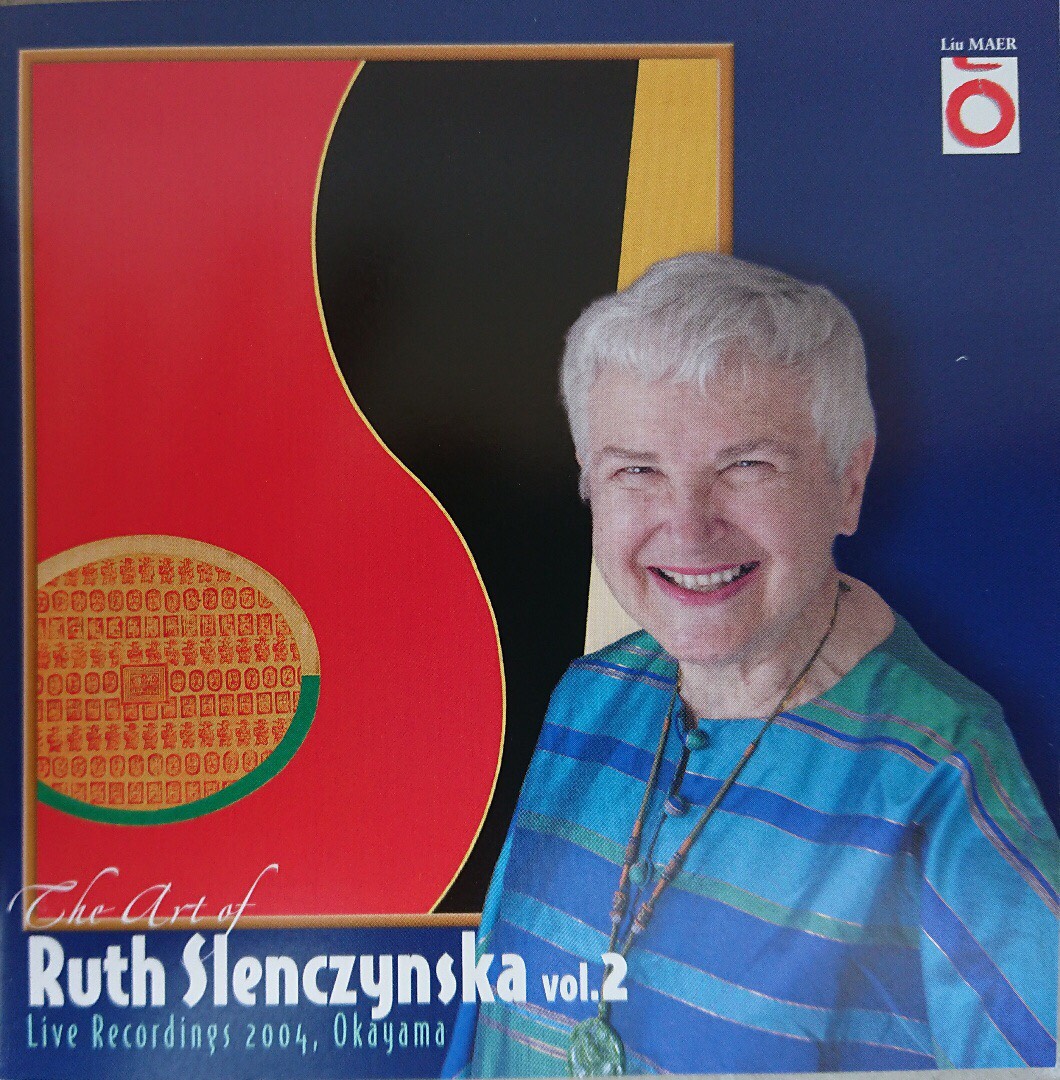The music maestro who links the classic to romanticism, and inherits the modern faction’s tradition
The greatest impact to classical music came in the form of a set of CDs released in July 2004. It was the premier live recording in Japan of the pianist Ruth Slenczynska.What is astonishing is that the CD was not published from Tokyo,the music broadcast center whose quality showed disdain for the world, but a private recording studio(museum),Liu MAER,located in Okayama Japan,published and distributed it. For music devotees who were grieved and poisoned by the stereotyping and commercialization of modern music industry, there is nothing more exhilarating than the CD release.
When Ruth Slenczynska’s performance initially discharged through the speakers, the color and the personality interwine the superb performance,subliminaly touched the audience’s hearts. Chopin’s prelude(previously released Vol.1 CD-2) lets the person see the resurfacing of Rachmaninoff’s style. Because the author revised Rachmaninoff’s anthology, her performance even amaze the author. But her playing does not drag like Rachmaninoff, She plays Chopin with such, hefty yet nimble like sophistication, that has quelled audience’s hearts with her exquisite performance.
In Beethoven’s(CD-1)performance, it inherited the classical complete structure and elegant interpretation, in addition to the non-flashy nor imposing style unbelievably bring people back to Leipzig’s musical world.
Slenczynska was born in 1925, studied under maestros such as Rachmaninoff,Cortot, Schnaber, Hofmann, Backhaus, etc.,and became long-time friends with Horowitz. That’s why her ability is so special. She studied under Backhaus,disciple of D’Albert − a timeless piano maestro. Backhaus inherited Leipzig’s great traditional branch − Beethoven style of performing. When the essence of admirable music maestro was absorbed, you end up with Slenczynska’s unique performance.
It is said that Slenczynska first studied under Leschetizky’s favorite disciple Kennedy.Leschetizky and Lizst were both understudies of Beethoven’s student − Czerny,and Leschetizky became the representatives of 19th century piano teacher along with Anton Rubinstein.Slenczynska’s next mentor − Schnaber is also one of Leschetizky’s favorite disciples. The author had restored Leschetizky’s two surviving performances.Its characterist lines in p.p. which presents a thread − like thinness and strength, colored like transparent glass Slenczynska’s unique sense in tone, or the infinitely expanding performance within soft playing interited Leschetizky’s essence and contains the strength to surpass Leschetizky’s prote´ge´s − Paderewski, Elly Ney and Moiseiwitsch.
The author has participated in the release of new Japan version of the Grove Music Encyclopedia since 1978, has recognized well-known musician’s performance records such as Saint-Saens, Prokofiev,Mahler even Joachim and Sarasate, and reprints the performance recordings and illustrations, multiple publisher and commentary events. The author discovers a thought-provoking phenomenon. The musicians of old, including composer themselves, all have the habit of not playing note by note from the printed music.
Slenczynska’s performance is not limited by what is written in the music. But regardless of the piece or the segment a dogmatic interpretation will never apper in her playing. The listeners can discover that she prudently deliberates the composer’s thought and how the pieces came to be. Careful attention is given in presenting them to her audience. This act further proves that she is a rare pianist that inherited classics and romantics, even the traditions from the near and modern age musicians.
Slenczynska’s attitude towords music annotation must have been established from the age of seven until fourteen by her mentor − Cortot. Round 1932 to 1939 is when Cortot in 1919 with the assistance from Casals and friends,founded Ecole Normale de Musique in Paris, left what is still know as the legendary music courses in interpretation. Cortot was unsurpassed in his annotations on Schumann. Cortot also received positive reviews from his annotations on Chopin, this is because he used to study under Chopin’s last student Emile Decombes. Slenczynska’s ability to discern the background of the piece and her sensitivity at adding annotations, are all cultivated during her teenage years.It is said that Slenczynska’s style of playing is heavily influenced by Rachmaninoff. Rachmaninoff possessed exceptional playing skills and abundant creativity. He is the last maestro to carry on the great tradition of romanticism. His meticulous piano playing was further accentuated by the capabilities of the modern piano. Therefore, when play his works, it is imperative for the performer to possess flexible and stable wrists and technique. When playin Rachmaninoff’s works, it is essentially that one is capable to calmly sing the melody in the ever-expanding sections and the dignifying movements all came from Rachmaninoff.
The auther owns Slenczynska’s CDs made in four different times: 1988, April 2004, November 2003(Vol.Ⅰ), and July 2004(Vol.Ⅱ&Ⅲ). 1988’s performance is only on par with the average master. But we do not know what drives her great transformation for over ten years. Her performace after 2003 is undoubtedly still evolving. She is currently seventy-nine years old. How many musicians in the world can still say they are transformation after the age of eighty?
The piano used dering performance is Steinway made in 1926. It is kept in the Liu Sei Yo Memorial Hall(Liu Mifune Art Ensemble). The tone moves the heart further after each time the piano has been played. This similar to have a conversation with the piano itself.
People often said: To a musician the best mentor is the instrument itself.To Slenczynska, the meeting with this Steinway must have given her a similar feeling. Slenczynska studied under Josef Hofmann, whom like Liszt and Busoni are of the three great romantic pianists. She not only merged the essence of the mentors but also constructed a great work that surpassed them as witness to the last romantic pianists.
We wish to give Bunsho Mifune our utmost respect for his magnificient achievement in preserving Slenczynska’s works for future generation.
translator Kiyoko Kruzliak

The Art of Ruth Slenczynska II
- Recording
- July 17th and 19th, 2004 Liu Mifune Art Ensemble
- Piano
- Steinway made in 1926 in Liu Mifune Art Ensemble
- Performance
- Ruth Slenczynska (Piano)
ラフマニノフ、コルトー、ホロヴィッツが賞賛した神童ルース・スレンチェンスカ。20世紀ピアノ演奏史の生き証人が、ピアニズムの最も進化した形をここに示す。巨匠ルース・スレンチェンスカ、79歳、2004年夏の熱い日本ライブ。
 〒703-8266 岡山県岡山市中区湊836-3
〒703-8266 岡山県岡山市中区湊836-3

